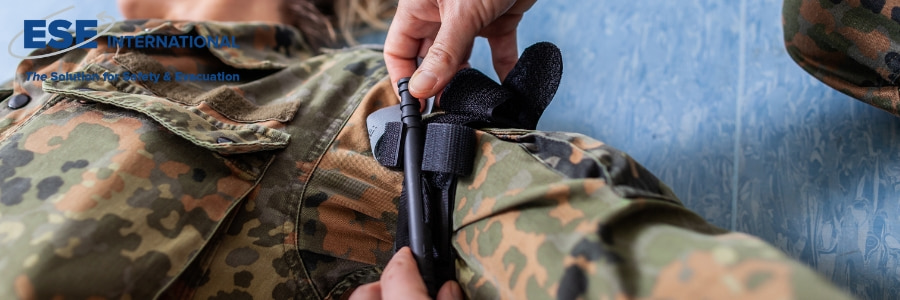A tourniquet is an important tool in emergency situations, especially in cases of severe bleeding. This article discusses what a tourniquet is, what it is used for, how to apply one, the different types of tourniquets, and how long you can leave a tourniquet in place.
What is a tourniquet?
A tourniquet is a medical device used to temporarily stop the flow of blood to a certain part of the body. This is done by firmly securing a band around a limb, thereby blocking the blood flow through the arteries.
Tourniquets are mainly used in situations where there is severe bleeding that cannot be stopped with other methods.
What do you use a tourniquet for?
A tourniquet is used to stop severe, life-threatening bleeding. This can be crucial in serious injuries where there is a risk of a lot of blood loss, such as in traffic accidents, industrial accidents or violent incidents.
Applying a tourniquet can effectively control bleeding until medical attention is available.
Applying a tourniquet in 7 steps:
- Identify the bleeding: Check the injury and determine if a tourniquet is necessary.
- Place the tourniquet: Place the tourniquet 5-7 cm above the wound, but not over a joint.
- Tighten the band: Pull the tourniquet band firmly until the bleeding stops.
- Secure the strap: Lock the strap in place using the retaining mechanisms.
- Turn the windlass: Turn the windlass (rod) until the bleeding stops and lock it into the holder.
- Note the time: Write the time of application on the tourniquet or on the patient’s skin. The tourniquet should not be left on for more than 2 hours.
- Check the bleeding: Check the wound regularly to make sure the bleeding has stopped and the tourniquet remains in place.
Tourniquet types
There are several types of tourniquets that are specifically designed for emergency use. Some of the most commonly used are:
- SAM XT Tourniquet: This tourniquet is designed for fast and efficient application with an automatic locking mechanism that is ideal for self-application. As a result, this tourniquet is widely used by police and military.
- CAT Tourniquet: The Combat Application Tourniquet (CAT) is one of the most widely used tourniquets by military personnel and first responders due to its simplicity and effectiveness. The tourniquet is operated with one hand, making it very easy to use.
How long should a tourniquet remain in place?
A tourniquet should not be left in place for more than two hours. Prolonged use of a tourniquet can lead to serious tissue damage and complications. It is essential to seek medical attention as soon as possible after a tourniquet is applied so that the cause of the bleeding can be treated definitively.
Disclaimer: Always have treatments performed by a trained first aider. In case of serious injuries, call 112 immediately or seek medical attention.





